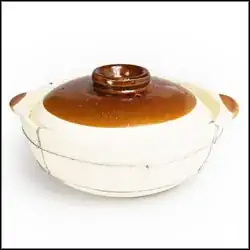I was making salt baked chicken last night, and I didn't have a casserole dish big enough for the bird. So, instead I used a half glazed Chinese clay pot, and put that straight into a pre-heated oven of 250C. Mine is similar to this one.
To avoid any thermal shock I placed the pot onto a wire rack instead of the baking tray. But I read in lots of places you shouldn't put clay pot into a pre-heated oven as you will crack it. Is this people's experience? I put this clay pot over the gas hob with no problems, and I find it hard to imagine that the air to clay heat transfer rate is so fast that it will crack the pot, but a gas flame doesn't.
